Mount Rushmore National Memorial, located in the Black Hills of South Dakota, is a colossal sculpture carved into Mount Rushmore's granite face. Sculptor Gutzon Borglum and his son Lincoln oversaw the project from 1927 to 1941. It features 60-foot-tall heads of four U.S. presidents: George Washington, Thomas Jefferson, Theodore Roosevelt, and Abraham Lincoln. These presidents were chosen to symbolize the nation's founding, expansion, development, and preservation. The memorial park covers 1,278 acres and attracts over two million visitors each year. The mountain itself stands at 5,725 feet above sea level.
1915: Shrine to the Confederacy Project
In 1915, the "Shrine to the Confederacy" project began carving Confederate generals into Stone Mountain, Georgia, influencing Doane Robinson's idea for a similar monument in South Dakota.
1919: Establishment of Custer State Park
In 1919, Peter Norbeck, then Governor, established Custer State Park, later supporting Doane Robinson's plan for Mount Rushmore.
1923: Robinson Promotes Monument Idea
In 1923, Doane Robinson, the Secretary of the South Dakota State Historical Society, began promoting the idea of creating a monument in the Black Hills to boost tourism.
August 20, 1924: Robinson Contacts Gutzon Borglum
On August 20, 1924, Doane Robinson contacted Gutzon Borglum, the sculptor of "Shrine to the Confederacy", inviting him to assess the feasibility of carving a monument in the Black Hills.
September 24, 1924: Borglum Travels to South Dakota
On September 24, 1924, Gutzon Borglum traveled to South Dakota to meet Doane Robinson and discuss the monument project.
1924: Canada gifts mountain goats to Custer State Park
In 1924, Canada gifted a herd of mountain goats to Custer State Park. These goats are the ancestors of those currently living near Mount Rushmore, after having escaped the park.
March 5, 1925: South Dakota Legislation Passes
On March 5, 1925, South Dakota legislation narrowly passed, and Governor Carl Gunderson signed it into law.
March 1925: Norbeck and Borglum Conference
In March 1925, a conference took place between Senator Norbeck and Gutzon Borglum to discuss the Washington-Lincoln design and the use of Black Elk Peak (Mount Harney).
August 14, 1925: Borglum Scouts Alternative Locations
On August 14, 1925, Gutzon Borglum summitted Black Elk Peak and, upon seeing Mount Rushmore, reportedly said, "America will march along that skyline," leading to his decision to choose Mount Rushmore as the carving location.
August 1927: Dedication Ceremony
In August 1927, President Calvin Coolidge attended a dedication ceremony for Mount Rushmore, where he promised federal funding for the project.
October 4, 1927: Sculpting of Mount Rushmore Begins
On October 4, 1927, Gutzon Borglum and 400 workers began sculpting Mount Rushmore, carving the faces of Presidents George Washington, Thomas Jefferson, Theodore Roosevelt, and Abraham Lincoln to represent the first 150 years of American history.
1927: Carving Started
Carving started on Mount Rushmore in 1927 with no fatalities.
1927: Mount Rushmore Execution Begins
In 1927, Gutzon Borglum began overseeing the execution of the Mount Rushmore sculpture, which he named the Shrine of Democracy.
1927: Construction Begins
In 1927, construction of Mount Rushmore began with the support of U.S. Senator Peter Norbeck, who secured federal funding for the project.
1929: Presidential Transition Delays Funding
In 1929, the presidential transition to Herbert Hoover delayed federal funding for Mount Rushmore until an initial match of $54,670.56 was acquired.
June 1930: Mount Rushmore Name Officially Recognized
In June 1930, the United States Board of Geographic Names officially recognized the name "Mount Rushmore," which had been used locally following Charles E. Rushmore's visit to the Black Hills in 1884 or 1885.
1933: National Park Service Jurisdiction
In 1933, the National Park Service took Mount Rushmore under its jurisdiction, and Julian Spotts helped improve the infrastructure, including upgrading the tram.
July 4, 1934: Dedication of Washington's Face
On July 4, 1934, the face of George Washington on Mount Rushmore was completed and dedicated.
1934: President's Faces Completion
Between 1934 and 1939 the president's faces were completed. Work continued until funding ran out.
1934: Essay Selected for Entablature
In 1934, an essay giving the history of the United States by Nebraska student William Andrew Burkett was selected as the college-age group winner and placed on the Entablature.
1936: Dedication of Jefferson's Face
In 1936, the face of Thomas Jefferson on Mount Rushmore was dedicated.
September 17, 1937: Dedication of Lincoln's Face
On September 17, 1937, the face of Abraham Lincoln on Mount Rushmore was dedicated.
1937: Bill to Add Susan B. Anthony Fails
In 1937, a bill in Congress to add the head of civil-rights leader Susan B. Anthony to Mount Rushmore failed, as a rider was passed requiring federal funds be used to finish only those heads that had already been started.
1939: President's Faces Completion
Between 1934 and 1939 the president's faces were completed. Work continued until funding ran out.
1939: Sculptor's Studio Built
In 1939, the Sculptor's Studio, a display of plaster models and tools, was built under the direction of Gutzon Borglum, and work was stopped on The Hall of Records to focus on the faces.
1939: Dedication of Roosevelt's Face
In 1939, the face of Theodore Roosevelt on Mount Rushmore was dedicated.
1939: Work Stopped on Hall of Records
In 1939, work stopped on Borglum's envisioned Hall of Records, which was intended to house America's greatest historical documents, to focus on the faces.
1940: Construction Begins on Crazy Horse Memorial
In 1940, construction began on the Crazy Horse Memorial elsewhere in the Black Hills. This was ostensibly to commemorate the Native American leader and was considered a response to Mount Rushmore. If completed, it would be larger than Mount Rushmore.
March 1941: Death of Gutzon Borglum
In March 1941, Gutzon Borglum died from an embolism, and his son, Lincoln Borglum, continued the Mount Rushmore project.
March 1941: Gutzon Borglum's Death
In March 1941, Gutzon Borglum, the sculptor of Mount Rushmore, passed away, leading his son Lincoln to take over the construction project.
October 31, 1941: Construction Ends Due to Lack of Funding
On October 31, 1941, construction of Mount Rushmore was forced to end due to lack of funding, leaving only Washington's sculpture with detail below chin level.
1941: Carving Ended
Carving ended on Mount Rushmore in 1941 with no fatalities.
1941: Mount Rushmore Execution Ends
In 1941, Gutzon and Lincoln Borglum completed the Mount Rushmore sculpture, featuring the heads of Presidents George Washington, Thomas Jefferson, Theodore Roosevelt, and Abraham Lincoln.
1941: No More Carvings Due to Unsuitable Rock
In 1941, after the completion of the sculpture, the sculptors said that the remaining rock was not suitable for additional carvings on Mount Rushmore.
August 11, 1952: Mount Rushmore Memorial 3-cent commemorative stamp issued
On August 11, 1952, the U.S. Post Office issued the Mount Rushmore Memorial 3-cent commemorative stamp on the 25th anniversary of the dedication of the Mount Rushmore National Memorial.
1957: Original Visitor Center Finished
In 1957, Harold Spitznagel and Cecil Doty designed the original visitor center as part of the Mission 66 effort to improve visitors' facilities at national parks.
1959: North by Northwest features Mount Rushmore
In 1959, Mount Rushmore appeared as the location of the final chase scene in the film "North by Northwest".
1963: Proposal to Add John F. Kennedy
In 1963, after his assassination, a proposal was made to add John F. Kennedy's likeness to Mount Rushmore.
October 15, 1966: Listed on National Register of Historic Places
On October 15, 1966, Mount Rushmore was listed on the National Register of Historic Places, recognizing its historical significance.
1971: Occupation by the American Indian Movement
In 1971, members of the American Indian Movement occupied Mount Rushmore, renaming it "Mount Crazy Horse". Lakota holy man John Fire Lame Deer planted a prayer staff on top of the mountain as a symbolic shroud over the presidents' faces until treaties concerning the Black Hills are fulfilled.
1973: Essay Placed on Bronze Plate
In 1973, the 500-word essay by William Andrew Burkett about the history of the United States was placed on a bronze plate on the Entablature at Mount Rushmore.
January 2, 1974: 26-cent airmail stamp depicting the monument issued
On January 2, 1974, a 26-cent airmail stamp depicting the monument was issued.
1980: US Supreme Court Ruling on Sioux Land Claim
In 1980, the US Supreme Court ruled in United States v. Sioux Nation of Indians that the taking of the Black Hills required just compensation, and awarded the tribe $102 million, which the Sioux refused, demanding the return of the land.
1980: United States v. Sioux Nation of Indians Decision
In 1980, the United States Supreme Court ruled in "United States v. Sioux Nation of Indians" that the Sioux had not received just compensation for their land in the Black Hills, including Mount Rushmore, and proposed $102 million as compensation.
1980: Superman II replaces presidential faces
In the 1980 film "Superman II", the presidential faces on Mount Rushmore are replaced with others.
1985: Proposal to Add Ronald Reagan
In 1985, a proposal was made to add Ronald Reagan's likeness to Mount Rushmore.
1989: RESPEC Assesses Rock Stability
In 1989, RESPEC, an engineering firm charged with monitoring the stability of the rock at Mount Rushmore, shared the stance that the remaining rock was not suitable for additional carvings.
1991: Official Dedication by President Bush
In 1991, President George H. W. Bush officially dedicated Mount Rushmore, solidifying its status as a national monument.
1991: Commemorative coins released
In 1991, the United States Mint released commemorative silver dollar, half-dollar, and five-dollar coins celebrating the 50th anniversary of the monument's dedication.
1996: Mars Attacks! replaces presidential faces
In the 1996 film "Mars Attacks!", the villains add their faces to Mount Rushmore.
1997: The Peacekeeper depicts a terrorist attack on Mount Rushmore
In the 1997 film "The Peacekeeper", Mount Rushmore is depicted as being attacked by terrorists.
1998: Fireworks Displays Begin
Beginning in 1998, fireworks displays took place on Independence Days near Mount Rushmore, which contributed to high concentrations of perchlorate in the area's water.
1998: Repository Constructed
In 1998, a repository was constructed inside the mouth of the cave to house 16 enamel panels with biographical and historical information about Mount Rushmore and the documents Borglum wanted to preserve.
1998: Electronic Monitoring Devices Installed
In 1998, electronic monitoring devices were installed at Mount Rushmore to track movement in the sculpture's topology with an accuracy of 0.12 inches (3 mm).
1998: Redevelopment Work Completed
In 1998, ten years of redevelopment work culminated with the completion of extensive visitor facilities and sidewalks at Mount Rushmore, including a Visitor Center, the Lincoln Borglum Museum, and the Presidential Trail.
1999: Congress Debates Adding Ronald Reagan
In 1999, a proposal to add Ronald Reagan's likeness to Mount Rushmore was debated in Congress.
2003: Head of State Adds New President's Face
In the 2003 film "Head of State", the face of the newly elected president is added to Mount Rushmore.
2004: Gerard Baker Appointed Superintendent
In 2004, Gerard Baker was appointed superintendent of Mount Rushmore, becoming the first Native American in that role.
2004: Team America: World Police Uses Mount Rushmore
In 2004, the film "Team America: World Police" depicted Mount Rushmore as a secret base of operations for the protagonists.
2005: Free Cleanup Operation by Alfred Kärcher
In 2005, Alfred Kärcher, a German manufacturer of pressure washing and steam cleaning machines, performed a free cleanup operation at Mount Rushmore. This cleanup involved using pressurized water at over 200 °F (93 °C) and lasted for several weeks.
2006: South Dakota State Quarter
In 2006, Mount Rushmore was the main subject of the South Dakota state quarter.
2006: 10.5: Apocalypse Shows Natural Disasters
In the 2006 miniseries "10.5: Apocalypse", Mount Rushmore is shown as a target of natural disasters.
2007: National Treasure: Book of Secrets Features Secret City
In 2007, the film "National Treasure: Book of Secrets" featured Mount Rushmore as the location of the secret underground city of Cíbola.
2008: Obama Joked About Potential Addition
In 2008, Barack Obama was asked about his own potential addition to Mount Rushmore and he joked that his ears were too large.
2009: Digital Recording via Laser Scanning
In 2009, Mount Rushmore was digitally recorded using terrestrial laser scanning as part of the Scottish Ten project. This effort provided a high-resolution record to aid in the site's conservation, and the data was made publicly accessible online.
2009: Fireworks Displays End
In 2009, the fireworks displays on Independence Days near Mount Rushmore ended. These displays were later identified as a probable cause of perchlorate contamination in the area's water.
2010: American Composer Michael Daugherty's piece for chorus and orchestra, "Mount Rushmore"
In 2010, American composer Michael Daugherty's piece for chorus and orchestra, titled "Mount Rushmore", depicted each of the four presidents in separate movements.
2011: Value of Sioux Compensation in 2011
In 2011, the compensation proposed for the loss of the Black Hills, including Mount Rushmore, was valued at $1.3 billion.
2012: Peak Tourism
In 2012, Mount Rushmore was South Dakota's top tourist attraction, drawing 2,185,447 visitors to the park.
2013: Nebraska Criticizes Mount Rushmore
In the 2013 film "Nebraska", Mount Rushmore is criticized for being unfinished, which is an atypical representation of the monument.
2016: U.S. Geological Survey Investigation Finds High Perchlorate Concentrations
In 2016, an investigation by the U.S. Geological Survey revealed unusually high concentrations of perchlorate in the surface and groundwater around Mount Rushmore, with one stream sample showing 270 times higher levels than locations outside the area.
2017: Trump Expresses Interest in Addition
During a 2017 rally in Ohio, Donald Trump jokingly expressed interest in having his likeness added to Mount Rushmore.
2018: Noem Describes Addition as Trump's Dream
In 2018, South Dakota Governor Kristi Noem described the potential addition of Donald Trump's likeness to Mount Rushmore as Trump's "dream".
November 2019: Death of Nick Clifford
In November 2019, Nick Clifford, the last remaining carver of Mount Rushmore, passed away at the age of 98.
2020: Oglala Lakota Nation Refuses Settlement
In 2020, Nick Tilsen, an Oglala Lakota Nation citizen and Indigenous activist, stated that his people would not accept a settlement for the Black Hills, including Mount Rushmore, demanding the full return of their lands as stipulated by treaties.
2021: Value of Sioux Compensation in 2021
By 2021, the compensation proposed for the loss of the Black Hills, including Mount Rushmore, had grown to nearly $2 billion with accumulated interest.
August 2024: Pelosi Suggests Biden Addition
In August 2024, former House Speaker Nancy Pelosi said that President Joe Biden is a “Mount Rushmore kind of president” and stated his likeness should be added to the monument.
2024: Cost of Project Adjusted for Inflation
The total cost of the Mount Rushmore project, completed in 1941, was US$989,992.32, equivalent to $21.2 million in 2024.
January 28, 2025: Bill Introduced to Add Trump's Likeness
On January 28, 2025, Rep. Anna Paulina Luna (R-FL) introduced a bill, H.R. 792, in the House of Representatives to add Donald Trump's likeness to Mount Rushmore.
Mentioned in this timeline
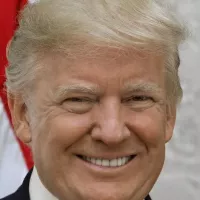
Donald John Trump is an American politician media personality and...

John F Kennedy JFK was the th U S President...
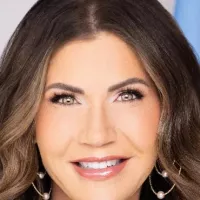
Kristi Noem is an American politician who has served as...
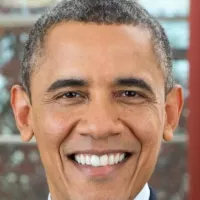
Barack Obama the th U S President - was the...

Fireworks are pyrotechnic devices primarily utilized for entertainment and aesthetic...
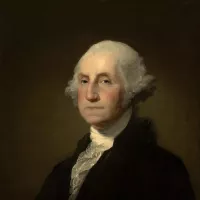
George Washington a Founding Father served as the first U...
Trending
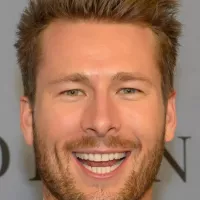
2 months ago Glen Powell's SNL Promo Channels Christopher Walken, Goes Viral This Week
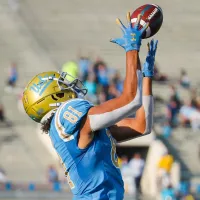
Caleb Wilson is a former American football tight end who played in the NFL He was drafted by the Arizona...

5 months ago Jessica Simpson Opens Up About Dating Post-Eric Johnson Divorce: A 'Rough' Experience

5 months ago Jon Bon Jovi and Dorothea to Speak at Power of Pink Fundraiser's 30th Year
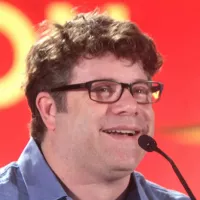
8 months ago Sean Astin's 'The Goonies' Celebrates 40th Anniversary, Streaming Free, Sequel Rumors Add Excitement

Ricky Dene Gervais is an English comedian actor writer producer and director known for his significant contributions to television He...
Popular

Stranger Things created by the Duffer Brothers is a popular...

XXXTentacion born Jahseh Dwayne Ricardo Onfroy was a controversial yet...
Turning Point USA TPUSA is an American nonprofit organization founded...
The Kennedy Center Honors are annual awards recognizing individuals and...

Bernie Sanders is a prominent American politician currently serving as...

Candace Owens is an American conservative political commentator and author...
